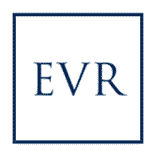Palazzo dei Congressi
Primary tabs
 Designer: A. Libera.
Designer: A. Libera.
Covered area: 10,150 m2; 216,500 m3.
Start and completion of works: 1939-1954,
The designer wished to give the building an extremely representative and classical appearance, combining modern line with a generally classical feel, making this an example of Mediterranean architecture that is admired throughout the world.
The central part of the building, which is 133 meters long and 75 wide, is dominated by the great cubic structure of the Salone dei Ricevimenti (Reception Hall), the roof of which is made entirely of metal. To complete it, the "Auditorium Capitalis" with a seating capacity of 792; a spectacular terrace measuring 1085 m2, adorned with hanging gardens containing 12 olive trees and an open-air theatre built entirely of Carrara marble, with a 774 m2 stage for events.
The areas of Palazzo dei Congressi are enriched by works of art by important Italian artists from the Twentieth century. Of particular interest are the decorative panels on agricultural subjects in the Art entrance hall. Extending for a good 55 meters along the back wall, these were created in 1953 by Gino Severini, a leading figure in the Futurist movement, and were commissioned for the International Agriculture Exhibition.
In the Kennedy entrance hall, which is the building's main entrance, there is a fresco by Achille Funi depicting scenes from the origins of Rome; also worthy of note are two magnificent mosaics, created by Angelo Canevari in 1940, which are currently to be found in the internal bar of the Palazzo. The structure, which today hosts prestigious national and international events, is managed by the company Roma Convention Group (100% EUR S.p.A.).
POINTS OF INTEREST
According to the original plans, the gigantic corbel that protrudes from the front of the cube was to have housed a statue of four horses pulling a triumphal carriage, driven by the goddess Victory. In spite of the public competition set up in 1940, the work was assigned directly to the sculptor Francesco Messina, who is now famous for the horse sculpture, symbol of the RAI offices in Viale Mazzini.
The war brought an end to Messina's work, which at the time had only gone as far as reduced scale casts of the four horses, which remained in the cellars of the Brera Academy - of which Messina was the director - until 1969, when he retired. Being forced to clear his property from the premises, and fearing that the plaster models would be damaged, Messina found in Giovanni Leone - at the time yet to become President of the Republic - a sponsor prepared to fund casting of the bronzes. The four elegant bronze horses still stand today in the garden of the Leone family's villa at Le Rughe, just outside Rome along the Via Cassia.
The fresco by Achille Funi in the Reception hall (now the Kennedy entrance hall) was left uncompleted due to the bombing of Rome in July 1943: of the 74 meters of painting originally foreseen, Funi only completed 20, on the subject All roads lead to Rome. Palazzo dei Congressi - EUR SpA - Art Entrance Hall. The preparatory drawings created by Funi for his fresco are kept at the Archivio Centrale di Stato (State Archives).
The panels that Gino Severini painted in 1953 on the occasion of the Agricultural Exhibition (the first event that, during the post-war period, re-launched the project for the district) covered Funi's uncompleted fresco which, after being hidden for over thirty years, was only restored to view between the 'Eighties and 'Nineties. At that time, Severini's panels were restored and positioned in the Art Entrance Hall, which opens onto the rear of the building.
Further information:
♦ G. Muratore e S. Lux (a cura di), Palazzo dei Congressi, Editalia - Edizioni d'Italia 1990 - Roma.
♦ E. Giovannetti, Il Palazzo dei Ricevimenti e Congressi, in Civiltà, n° 2, giugno 1940, pp. 57-64;
♦ C. De Seta (a cura di), Architettura e città durante il fascismo, Roma-Bari, Laterza, 1976;
♦ T. Gregori, A. Tartaro (a cura di), E42. Utopia e scenario del regime. Ideologia e programma per l'«Olimpiade delle civiltà», Marsilio Editore 1987 - Venezia.
♦ M. Pignatti Morano, N. Di Santo, P. Refice (a cura di), E42: l'immagine ritrovata: catalogo dei cartoni e degli studi per la decorazione, Roma, F.lli Palombi, 1990;
♦ G. Muratore, S. Lux, E. Cristallini, A. Greco, Palazzo dei Congressi. Vicende e documenti inediti, Roma, Editalia 1991;
♦ R. De Fusco, Storia dell'architettura contemporanea, Roma, Laterza, 2007.
Nome previsto per l'Esposizione Universale di Roma (1942) "Palazzo delle Feste, dei Ricevimenti e dei Congressi".
